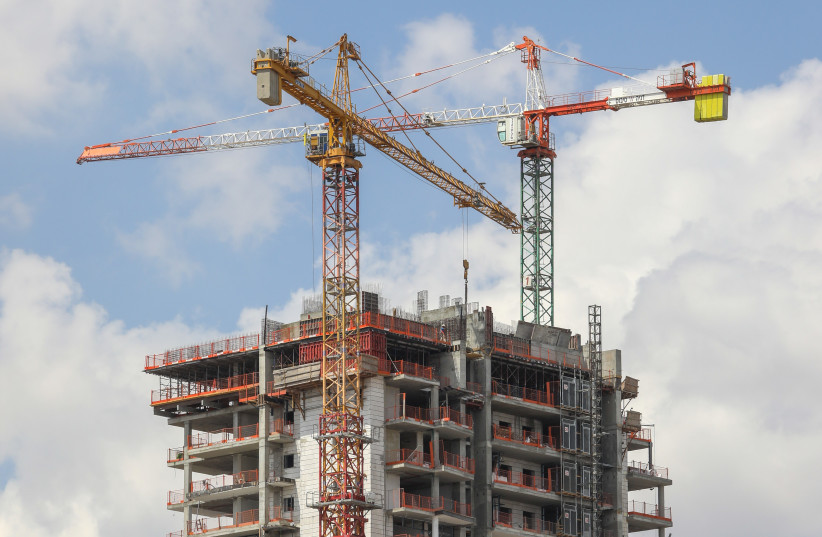From the 1970s to the 1990s, high-rise construction in Jerusalem was a burning issue on the public and political agenda. The struggles against high-rise construction – and failure of these struggles – have shaped the city’s skyline.
It started in the early 1970s when the Wolfson Towers were erected opposite Sacher Park – which many still consider an urban and architectural mistake. But it didn’t stop there.
In the late 1970s, residents managed to prevent a project to erect a row of towers in the Liberty Bell Garden area, but soon after, the Clal Building, the City Tower (on King George Ave.) and the Rasko building were built – all three in central Jerusalem and all three still in dispute. A few years ago a major addition to the Clal Building essentially obliterated the historic style of the Agrippas St. area and Mahaneh Yehuda market entrances. Now a huge complex of three 20-story buildings, when completed, will literally dwarf the historical Alliance School building.
Other initiatives, such as the huge “Tower of the Universe” designed by Ram Carmi in central Jerusalem, were canceled after public protest, but the threat remains.
All of these were planned and built more than 10 years ago. But then, under mayor Ehud Olmert, city engineer Uri Shetreet (who has since been sentenced to seven years in jail for his part in the Holyland affair) swore that under his watch, no tower would be built in the “historical city” – which comprises all the neighborhoods built before 1967. Shetreet – who seemingly didn’t realize that the Holyland project was erected in the historical part of the city he wanted to preserve – said that 1) in order to protect the green space and the capital’s environment, there should not be building in the west according to the controversial Safdie plan, and 2) because construction in the city’s east side was almost impossible due to international politics, there would be no option other than to build high towers in the post 1967-neighborhoods – such as Ramot, Gilo, East Talpiot and Pisgat Ze’ev.

Stage II of the oppressive presence of the Holyland towers on the skyline, which included three additional proposed 30-story buildings, was blocked and finally canceled following the fraud and corruption scandal – but it hasn’t completely quenched the thirst of planners and developers for other towers elsewhere. Until recently these were only ad-hoc projects, sometimes approved, often rejected. But the revolutionary decision of the Interior Ministry’s District Committee in July 2017, in cooperation with the Jerusalem Municipality, has established a new policy. Now 18- to 30-story buildings can be built on lots adjacent to the light rail tracks.
Today there is one light rail line, but it is being expanded and four more lines are expected. Already now, even before the new railway lines have been built, plans can be submitted for towering structures in many areas throughout the city.
The decision was approved as an urgent solution to add badly needed housing units for Jerusalem without harming the environment in the west side or the politically sensitive areas in the east. However, none of these towers have reduced the prices of housing here, on the contrary – acquiring an apartment in Jerusalem continues to become ever more unaffordable.
The capital’s skyline is changing radically without any real public debate on the matter. Mayor Moshe Lion continually urges entrepreneurs and contractors to build more towers, but apart from fading opposition from residents of Emek Refaim St. and strong (sometimes even violent) resistance from the haredi public on Bar Ilan St., few Jerusalemites are aware of the huge momentum to change the Holy City’s character.